A window on remarkable cryptic diversity of the Merodon planifacies subgroup (Diptera: Syrphidae) in the Afrotropical Region
- PMID: 39382173
- PMCID: PMC11462455
- DOI: 10.1093/jisesa/ieae091
A window on remarkable cryptic diversity of the Merodon planifacies subgroup (Diptera: Syrphidae) in the Afrotropical Region
Abstract
The genus Merodon Meigen (Diptera: Syrphidae) is one of the most species-rich hoverfly genera distributed across the Palaearctic and Afrotropical regions. In the Palaearctic, the genus Merodon boasts 195 described species, while its Afrotropical region pales in comparison, with a mere 17 species documented thus far. As a result of 8 years of fieldwork conducted in the Republic of South Africa, in this paper, we present the description of 11 new species for science with a description of immature stages for 2 species, which increases the diversity of this genus in the Afrotropical region by remarkable 39%. These revelations are based on integrating morphology, molecular analysis (COI gene and 28S rRNA) and geometric morphometry. All described species belong to the Merodon planifacies subgroup, the Merodon desuturinus lineage and, within that, to the Afrotropical Merodon melanocerus group. Additionally, we provide an illustrated key to 15 species belonging to the subgroup, a detailed discussion on relevant taxonomic characters, a morphological diagnosis, a distribution map and clarification of the association between M. capi complex and host plants from the genus Merwilla.
Keywords: integrative taxonomy; new species; new synonym; preimaginal stage; sub-Saharan Africa.
© The Author(s) 2024. Published by Oxford University Press on behalf of Entomological Society of America.
Figures








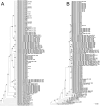
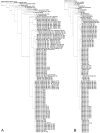














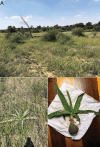









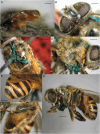


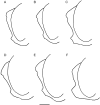
















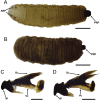




References
-
- Ačanski J, Vujić A, Djan M, et al.. 2016. Defining species boundaries in the Merodon avidus complex (Diptera, Syrphidae) using integrative taxonomy, with the description of a new species. Eur. J. Taxon. 237(237):1–25.
-
- Ačanski J, Vujić A, Zorić LS, et al.. 2022. Merodon chalybeus subgroup: an additional piece of the M. aureus group (Diptera, Syrphidae) puzzle. Ann. Zool. Fenn. 59(1):79–109.
-
- Akaike H. 1974. A new look at the statistical model identification. IEEE Trans. Autom. Control 19(6):716–723. 10.1109/tac.1974.1100705 - DOI
-
- Andrić A, Šikoparija B, Obreht D, et al.. 2014. DNA barcoding applied: identification of the larva of Merodon avidus (Diptera: Syrphidae). Acta Entomol. Mus. Natl. Pragae 54(2):741–757.
MeSH terms
Substances
Grants and funding
LinkOut - more resources
Full Text Sources
Research Materials

